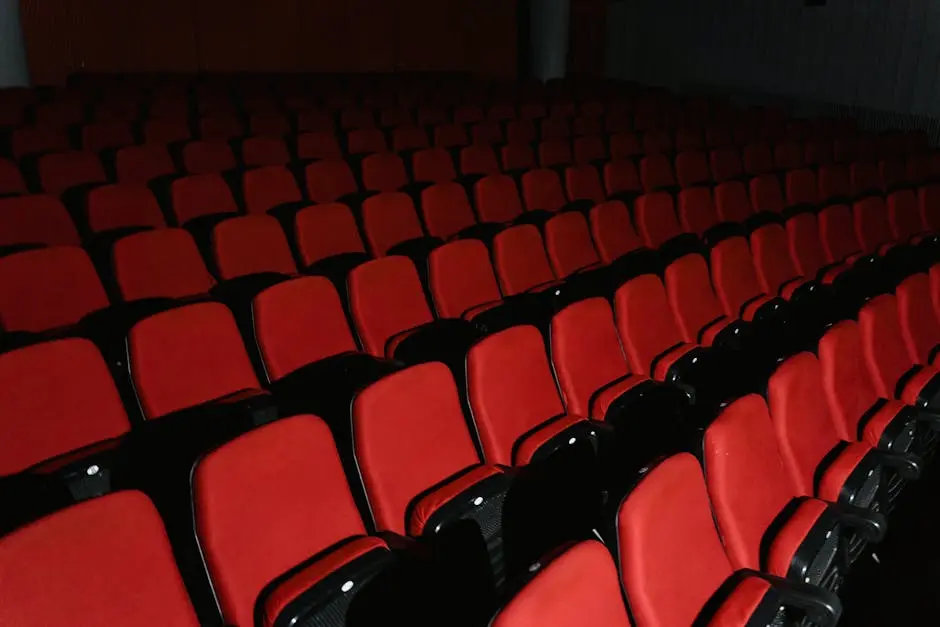Kung Fu action cinema has a rich history filled with breathtaking choreography, captivating storytelling, and unforgettable characters. While many fans are familiar with iconic titles, there are numerous hidden gems that deserve recognition. In this blog, we will delve into some of these lesser-known films that showcase the artistry and excitement of kung fu action cinema.
The Origins of Kung Fu Action Cinema
Kung Fu action cinema’s origins can be traced back to traditional martial arts performances that were an integral part of Chinese culture. These performances were deeply rooted in storytelling and often depicted heroic figures overcoming adversity through skill and determination. As film emerged as a medium, these stories found their way onto the silver screen, creating a new avenue for martial arts expressions. The blending of dramatic narratives with dazzling combat sequences set the stage for what would become a defining genre.
With these early influences, filmmakers in Hong Kong began experimenting with the format, looking to capture the fast-paced, high-energy movements of martial arts in film. One of the earliest films, “The Burning of the Red Lotus Temple,” marked a significant evolution, establishing themes and character tropes that audiences would come to associate with kung fu action cinema. As more directors adopted this style, the genre flourished and diversified, paving the way for future legends.
As we explore the origins, it’s essential to acknowledge how these films were often influenced by Chinese opera and traditional folk tales. The legendary stories of brave warriors like the Monkey King transcended time, directly inspiring martial arts narratives. This blending of folklore with cinematic storytelling provided a rich backdrop for filmmakers who sought to intertwine heart-stopping fight scenes with compelling plots. It’s a beautiful reminder of how martial arts is not just about fighting; it’s about culture and heritage.
The Influence of Bruce Lee: A Lasting Legacy
Bruce Lee is undoubtedly one of the most significant figures in kung fu action cinema, transforming how martial arts were perceived around the world. His charismatic persona and unmatched skills not only established him as a global icon but also elevated the genre itself. With films like “Enter the Dragon,” Lee’s innovative approach to fight choreography showcased agility and precision, making martial arts accessible and appealing to a broader audience.
Lee’s philosophy of martial arts was as influential as his on-screen presence. He introduced concepts like Jeet Kune Do, emphasizing the importance of fluidity and adapting techniques from various disciplines. This idea inspired not only fellow martial artists but also filmmakers who sought to create more dynamic fight sequences that went beyond traditional styles. Lee’s legacy is evident in many modern action films today, where hybrid fighting styles are celebrated.
In addition to his physical prowess, Lee’s work opened doors for Asian representation in Hollywood. His strong performances debunked stereotypes and presented complex characters with depth and emotion. These elements resonated with audiences and encouraged aspiring martial artists and actors. Even decades after his untimely death, Bruce Lee’s contributions to kung fu action cinema continue to influence and inspire artists, making him a timeless figure in the genre.
Spotlight on Underrated Films: Hidden Treasures
While blockbuster hits often dominate conversations about kung fu action cinema, there exists a treasure trove of underrated films that deserve a spotlight. Movies like “The Eight Diagram Pole Fighter” and “My Young Auntie” feature incredible choreography often overshadowed by their more famous counterparts. These films may not have achieved mainstream success, but they possess unique storytelling, remarkable performances, and distinct martial arts styles, enriching the genre.
In “The Eight Diagram Pole Fighter,” we witness the formidable talents of Gordon Liu, whose portrayal of a loyal warrior showcases emotional depth alongside his impressive skill set. The film is a narrative of revenge and redemption, which envelops viewers in the themes of loyalty and sacrifice during tumultuous times. Moreover, the choreography balances between raw power and artistic expression in fight scenes, revealing the character’s inner turmoil and growth.
Another hidden gem, “My Young Auntie,” is delightful in its mix of comedy and action. Starring the legendary Lau Kar-wing and featuring a strong female lead, this film breaks gender norms, portraying a resilient woman who takes charge of her destiny. The film’s fight sequences are both entertaining and dynamic, showcasing unique styles and a charming sense of humor. The underappreciated performances provide a refreshing take on the genre, reminding us that kung fu action cinema is not solely male-dominated.
Unique Styles and Techniques in Lesser-Known Films
The beauty of kung fu action cinema lies in its diversity, particularly in the unique styles and techniques showcased across lesser-known films. Each film seems to bring to life different martial arts philosophies, creating a rich tapestry of cultural expressions. For instance, films like “The Legend of the 8 Samurai” fuse traditional martial arts with elements of fantasy, introducing viewers to weaponry and techniques that may not be rooted in reality, yet captivate audiences with their imagination and creativity.
Another noteworthy example is found in the film “The Master of the Shadowless Kick,” which features an intricate blend of acrobatics and traditional kung fu techniques. The movie highlights varied fighting styles, emphasizing the importance of agility and adaptability in combat. Such films often use visual storytelling to communicate martial arts principles, making fight scenes not just a source of excitement but also a way to educate audiences on the depth of martial arts concepts.
Moreover, the use of cinematography in these films contributes significantly to the depiction of unique styles. Creative choreography combined with clever camera work enhances the storytelling aspect, allowing viewers to immerse themselves fully into the fight scenes. Films such as “Dragon: The Bruce Lee Story” interspersed drama with reenacted martial arts techniques, thereby not only highlighting the physical prowess of its characters but also emphasizing their emotional stakes.
Character Development in Kung Fu Action Cinema
Character development is a crucial element in kung fu action cinema that often gets overlooked in favor of fight choreography. However, strong narratives and well-rounded characters are what truly elevate these films. For example, in “Iron Monkey,” we follow the story of a masked vigilante fighting against corruption, who gradually reveals his motives and moral dilemmas throughout his journey. This plotline resonates deeply with the audience, showcasing that the protagonist’s struggles mirror broader societal issues.
Each character’s journey in kung fu action cinema serves as a means of exploring deeper themes such as honor, responsibility, and the consequences of violence. The complexities of character motivations add layers to the story, engaging viewers beyond the visually stunning fight scenes. When characters have backstories that explain their decisions, it creates a connection with the audience, ensuring emotional investment in their journeys.
Additionally, the contributions of supporting characters cannot be understated. In many films, secondary figures often provide not only comic relief but also moral guidance to the protagonists. For example, in “The Heroic Trio,” the trio of female leads showcases different personalities and fighting styles, each contributing to the team’s dynamic. This rich character interaction not only enhances the story but also portrays the importance of collaboration and friendship amidst adversity.
How Cult Classics Shape Modern Kung Fu Films
Cult classics in kung fu action cinema have played a significant role in shaping the narrative and visual style of modern martial arts films. These films, often characterized by their unique aesthetics and eclectic storytelling, paved the way for filmmakers who seek to blend genres and defy conventions. For instance, films like “36th Chamber of Shaolin” exhibit a blend of historical lore, training montages, and spiritual themes, elements that many contemporary filmmakers still reference.
Such cult classics have also introduced iconic characters that continue to influence new works today. The archetype of the reluctant hero seeking redemption has become a common trope, resonating with audiences across different cultures. The way these classic films handle themes of perseverance and self-discovery has set a precedent for modern depictions of martial arts, urging filmmakers to focus on character arcs rather than purely sensationalized fight scenes.
Moreover, the fashion and stylistic choices found in cult classics have a lasting impact on the visual language of martial arts cinema. From elaborate costumes to iconic weaponry, these films often inspire modern designers and choreographers striving to capture the spirit of kung fu. The homage paid to these stylistic elements adds a layer of nostalgia while simultaneously modernizing the art form, making it resonate with both new and old fans alike.
The Role of Women in Kung Fu Action Cinema
Women have always played a significant role in kung fu action cinema, although their contributions have sometimes been overshadowed by their male counterparts. In recent years, however, female characters have boldly stepped into leading roles, showcasing their fighting prowess and complex narratives. Films like “Crouching Tiger, Hidden Dragon” exemplify how powerful female characters can anchor the story, proving that strength and grace coalesce beautifully within martial arts.
These dynamic female characters often break stereotypes, portraying women not as mere sidekicks or romantic interests, but as fully realized fighters in their own right. The character of Yu Shu Lien, played by Michelle Yeoh, showcases a blend of honor, vulnerability, and mastery in her craft, which challenges conventional gender roles in cinema. Through their formidable performances, women in kung fu films inspire a new generation of viewers, encouraging them to challenge boundaries.
More contemporary films continue this trend, introducing characters who are not just skilled fighters, but leaders and warriors with rich backstories. In “The Assassin,” we see a portrait of a female assassin caught between duty and personal desire, adding layers of complexity to the narrative. This enriched character development fosters an appreciation for the multi-faceted nature of women in martial arts, highlighting their contributions both on and off the screen.
Rediscovering the Art of Kung Fu Action Cinema
By exploring these hidden gems, we not only uncover the depth of kung fu action cinema but also discover filmmakers who have pushed the boundaries of the genre. Each film offers a unique perspective and style, contributing to the vibrant tapestry of martial arts filmmaking. Whether you’re a longtime fan or a newcomer, these films are sure to delight and inspire.


